May 2022
What Causes a Hammertoe?
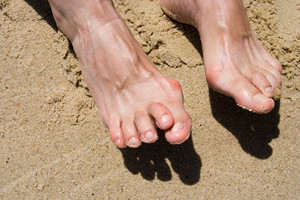
A hammertoe is a common deformity where a toe bends upward at the middle joint and gets stuck in that position. The top of the toe bends forward so it looks like a hammer. As time passes, the joint may get more rigidly bent and it can be painful and possibly lead to difficulty in walking and maintaining balance. Hammertoes can be inherited, with those with flatter feet and longer metatarsals (or middle bones of the feet) being more at risk. They can also be associated with a medical condition, such as diabetes. However, most often hammertoes develop from an imbalance within the toe structure. Usually something that forces extra weight to be put on the forefoot and toes (like tight shoes or high heels) can lead to hammertoes. The small muscles on the bottom of the foot get weaker than the larger muscles on the top of the foot and the toe does not bend or flex. Early detection and conservative treatment can help prevent the need for hammertoe surgery. Such intervention can be as simple as changing footwear to providing extra room for the toes, avoiding narrow, tight, and heeled shoes, using custom orthotics to off-load extra weight and strain towards the forefoot. If you suffer from a hammertoe, it is suggested you consult with a podiatrist to find the best treatment plan.
Hammertoe
Hammertoes can be a painful condition to live with. For more information, contact Brian D. Jackson, DPM from Neuhaus Foot and Ankle. Our doctor will answer any of your foot- and ankle-related questions.
Hammertoe is a foot deformity that affects the joints of the second, third, fourth, or fifth toes of your feet. It is a painful foot condition in which these toes curl and arch up, which can often lead to pain when wearing footwear.
Symptoms
- Pain in the affected toes
- Development of corns or calluses due to friction
- Inflammation
- Redness
- Contracture of the toes
Causes
Genetics – People who are genetically predisposed to hammertoe are often more susceptible
Arthritis – Because arthritis affects the joints in your toes, further deformities stemming from arthritis can occur
Trauma – Direct trauma to the toes could potentially lead to hammertoe
Ill-fitting shoes – Undue pressure on the front of the toes from ill-fitting shoes can potentially lead to the development of hammertoe
Treatment
Orthotics – Custom made inserts can be used to help relieve pressure placed on the toes and therefore relieve some of the pain associated with it
Medications – Oral medications such as anti-inflammatories or NSAIDs could be used to treat the pain and inflammation hammertoes causes. Injections of corticosteroids are also sometimes used
Surgery – In more severe cases where the hammertoes have become more rigid, foot surgery is a potential option
If you have any questions please contact one of our offices located in Columbia and Pulaski, TN . We offer the newest diagnostic and treatment technologies for all your foot and ankle needs.
What Can Cause Radiating Pain in the Toes?
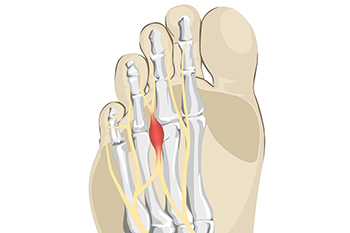
There are nerves between the toes that can become compressed or irritated from constant pressure. This pressure may come from wearing improperly fitted shoes or high heels, and engaging in repetitive sporting activities, like running. When one of these nerves gets irritated, it can thicken and become painful. The pain can feel like a burning sensation in the ball of the foot that may come and go, or there may be a radiating numbness or tingling through the toes. Some people even feel like they have a bunched up sock or pebble stuck in their shoe, and it is difficult to walk. This condition is known as Morton’s neuroma. You may be more at risk of developing Morton’s neuroma if you have a gait abnormality, flat feet, high arches, bunions or hammertoes. It is important to seek treatment early on, as permanent nerve damage may occur if the condition is not treated properly. A podiatrist can examine you and may need to perform various tests to rule out other possible causes for your pain. If it is determined that you have Morton’s neuroma, your podiatrist will discuss the best treatment options to correct this painful condition.
Morton’s neuroma is a very uncomfortable condition to live with. If you think you have Morton’s neuroma, contact Brian D. Jackson, DPM of Neuhaus Foot and Ankle. Our doctor will attend to all of your foot care needs and answer any of your related questions.
Morton’s Neuroma
Morton's neuroma is a painful foot condition that commonly affects the areas between the second and third or third and fourth toe, although other areas of the foot are also susceptible. Morton’s neuroma is caused by an inflamed nerve in the foot that is being squeezed and aggravated by surrounding bones.
What Increases the Chances of Having Morton’s Neuroma?
- Ill-fitting high heels or shoes that add pressure to the toe or foot
- Jogging, running or any sport that involves constant impact to the foot
- Flat feet, bunions, and any other foot deformities
Morton’s neuroma is a very treatable condition. Orthotics and shoe inserts can often be used to alleviate the pain on the forefront of the feet. In more severe cases, corticosteroids can also be prescribed. In order to figure out the best treatment for your neuroma, it’s recommended to seek the care of a podiatrist who can diagnose your condition and provide different treatment options.
If you have any questions, please feel free to contact one of our offices located in Columbia and Pulaski, TN . We offer the newest diagnostic and treatment technologies for all your foot care needs.
Busy Life? Make Time to Warm Up and Cool Down Before and After Running
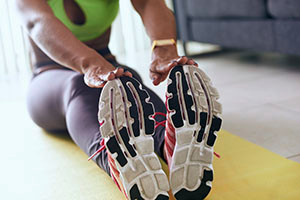
There are many people who have busy schedules which can make it difficult to practice adequate warm up and cool down stretches before running. It is important to make time to properly stretch before and after running, as this may help to prevent running injuries. Beneficial changes that can help to avoid injuries consist of improving form by maintaining good posture, and practicing correct training procedures. Research has shown it helps to gradually increase mileage and speed, and it is important to stay hydrated and to eat enough protein. Additionally, when one day per week is taken off from running, it can help to give the body adequate time to rest. If you have questions about how running injuries can affect the feet and how to avoid them, please consult with a podiatrist.
Exercising your feet regularly with the proper foot wear is a great way to prevent injuries. If you have any concerns about your feet, contact Brian D. Jackson, DPM of Neuhaus Foot and Ankle. Our doctor will treat your foot and ankle needs.
How to Prevent Running Injuries
Many common running injuries are caused by overuse and overtraining. When the back of the kneecap starts wearing out and starts causing pain in your knee, this is commonly referred to as runner’s knee. Runner’s knee is a decrease in strength in your quadriceps and can occur if you’re not wearing properly fitted or supporting shoes. To prevent runner’s knee, focusing on hip strengthening is a good idea, as well as strengthening your quads to keep the kneecaps aligned.
What Are Some Causes of Running Injuries?
- One cause of a common running injury is called iliotibial band syndrome.
- Plantar fasciitis is also another common injury.
- Stress fractures can occur from overtraining, lack of calcium, or even your running style.
Best Ways to Prevent Running Injuries
- Wear footwear that fits properly and suits your running needs.
- Running shoes are the only protective gear that runners have to safeguard them from injury.
- Make a training schedule. Adding strengthening exercises as well as regular stretching can help keep you strong and limber and can lessen the possibility of injuries.
- Stretching keeps muscles limber; this will help you gain better flexibility.
If you have any questions please feel free to contact one of our offices located in Columbia and Pulaski, TN . We offer the newest diagnostic and treatment technologies for all your foot and ankle needs.
Do Your Child's Feet Hurt?
How to Prevent Diabetic Foot Problems
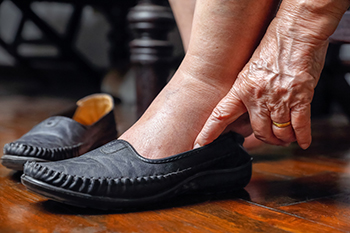
Diabetes frequently constricts blood flow to the extremities, which can develop into peripheral neuropathy. Your feet may become numb, resulting in a slowing of the healing process. Even a tiny unhealed, or undetected, sore on the sole of the foot may become ulcerated and require medical attention. Proper foot care is imperative for diabetics and is a good way to ward off foot ulcers, swelling, pain and infection. For starters, make an appointment to see a podiatrist regularly to monitor the health of your feet. In addition, begin a regular regime of washing, drying, moisturizing, and exercising your feet. Check, or have someone else check, your feet daily for any sores and bruises, swelling and pain, corns or calluses, and changes in color. It is recommended that diabetics cease smoking, which adds to the constriction of blood vessels and furthers neuropathy. Keep toenails trimmed properly to avoid ingrown toenails and infections. Wear shoes that protect your feet from heat or cold. These measures, along with regulating blood sugar levels and eating a healthy diet, can help protect you from the dangers of foot ulcers. If you have questions about diabetic foot care, please make an appointment with a podiatrist.
Diabetic foot care is important in preventing foot ailments such as ulcers. If you are suffering from diabetes or have any other concerns about your feet, contact Brian D. Jackson, DPM from Neuhaus Foot and Ankle. Our doctor can provide the care you need to keep you pain-free and on your feet.
Diabetic Foot Care
Diabetes affects millions of people every year. The condition can damage blood vessels in many parts of the body, especially the feet. Because of this, taking care of your feet is essential if you have diabetes, and having a podiatrist help monitor your foot health is highly recommended.
The Importance of Caring for Your Feet
- Routinely inspect your feet for bruises or sores.
- Wear socks that fit your feet comfortably.
- Wear comfortable shoes that provide adequate support.
Patients with diabetes should have their doctor monitor their blood levels, as blood sugar levels play such a huge role in diabetic care. Monitoring these levels on a regular basis is highly advised.
It is always best to inform your healthcare professional of any concerns you may have regarding your feet, especially for diabetic patients. Early treatment and routine foot examinations are keys to maintaining proper health, especially because severe complications can arise if proper treatment is not applied.
If you have any questions please feel free to contact one of our offices located in Columbia and Pulaski, TN . We offer the newest diagnostic and treatment technologies for all your foot and ankle needs.
Corns 101
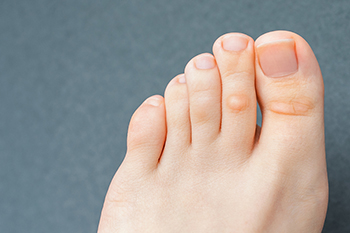
A corn is a small, hardened area of skin that often develops on the outside of the pinky toe or on top of the toes. A soft corn generally forms between the toes, but any type of corn can cause discomfort. Most corns develop as a result of excess friction, and this may happen due to wearing shoes or socks that are too tight. The corn will gradually diminish when the friction or rubbing is ceased. Wearing a cushioned pad on top of the corn may help to relieve some pain that often accompanies a corn. There are some patients who find it helpful to soak the affected foot in warm water as this can soften the skin. It is important to leave the corn alone and refrain from cutting it with toenail trimmers or scissors. If you have a corn or experience recurring corns, it is suggested that you speak with a podiatrist who can help you with proper treatment techniques and offer effective preventative methods.
If you have any concerns regarding your feet and ankles, contact Brian D. Jackson, DPM of Neuhaus Foot and Ankle. Our doctor will treat your foot and ankle needs.
Corns: What Are They? and How Do You Get Rid of Them?
Corns can be described as areas of the skin that have thickened to the point of becoming painful or irritating. They are often layers and layers of the skin that have become dry and rough, and are normally smaller than calluses.
Ways to Prevent Corns
There are many ways to get rid of painful corns such as wearing:
- Well-fitting socks
- Comfortable shoes that are not tight around your foot
- Shoes that offer support
Treating Corns
Treatment of corns involves removing the dead skin that has built up in the specific area of the foot. Consult with Our doctor to determine the best treatment option for your case of corns.
If you have any questions please feel free to contact one of our offices located in Columbia and Pulaski, TN . We offer the newest diagnostic and treatment technologies for all your foot and ankle needs.








